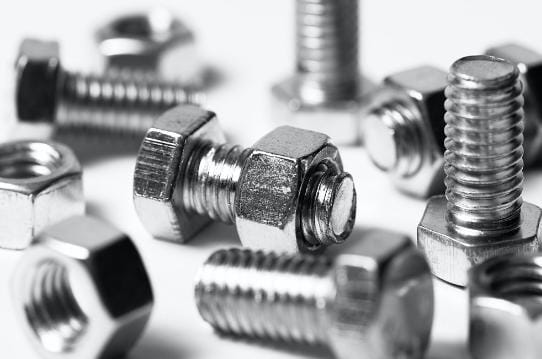Nuts are a sort of tapped inner diameter hardware fastener. To secure components, they are utilized with a matching threaded bolt or rod. Bolts and nuts come in a variety of sizes and shapes, each with its own attaching function. As per the nuts-and-bolts suppliers, certain nuts can be installed without the need for tools, while others may have unique features that prohibit the nut from releasing. High tensile types of nuts have better longevity, and they stay for long when you use them for any project. They give proper resistance against corrosion, and they also last long against major weather variations.
Nuts connect components together using the same mechanical characteristics:
friction between the nut and bolt threads, which is made up of a tiny stretch of the bolt due to the tension stiffness of the elements being secured, and a tiny elastic component.
• Acorn nuts feature a threaded end with a smooth, capped recess. They give security and a completed look, according to the nuts-and-bolts suppliers.
• Anchor nuts flex so that a piece of the nut pushes against the wall when an anchor bolt is used to secure hanging goods.
• The threaded diameter of barrel nuts is perpendicular to their length. These are great for carrying small items and putting together metal and furniture. Check the grade, size, finishing and material. This will allow you to grade the nature of any construction project that you undertake.
• Cage nuts are squared nuts that are compacted and released for gradual adjustment inside a folding metal cage.
There are various diameters of the hex nuts and other types of nuts that you can use:
• The six-sided outer diameters of hex nuts are the perfect solution for torque angle and imprint size.
• Push nuts are non-threaded, tiny fasteners that are simple to place but hard to remove. Mechanical resistance is provided by spring steel flanges.
• The slots in castle nuts run concurrently to the screw axis. The nut is held in place by steel cable, or a Grainger pin put through the slots.
• In a wooden workpiece, insert nuts to produce a threaded socket. The substrate is penetrated by sharp flanges. Screw-in and hammer-in options are available.
• Flange nuts feature a serrated front and an expanded circular base. This evenly distributes the load and keeps it from loosening.
• Grooved hex nuts with only an angular distance to lock the nut are known as jet nuts. The hex is narrower than a hex nut of the same size.
• A free-spinning external teeth lock washer is fitted to one edge of a hex nut in Kep nuts. The first and foremost thing to look is to find out whether the nuts are precisely designed, whether they have a strong structure and a rugged form of construction.
Check out the locking and the non-locking nuts where action can be created, and things can be fastened easily:
When two non-locking nuts are retightened against each other, a locking action is created. The internal nut is twisted to about half its maximum torque on the substrate. The internal nut is maintained in place while the bolt is fully torqued with a second nut. This causes a tensile force on the nut threads, which locks them in place.
Nuts are also assigned a compliance class, which specifies how precise they are in an assembly. For quick assembly as per the nuts-and-bolts suppliers and unclean venues, Class 1B screws are loose-fitting. The most frequent thread class is Class 2B, which is intended for maximum intensity and common accuracy. The assembly tolerance in Class 3B is the smallest. Check and buy the nuts that have flawless kind of construction and those that have the perfect finish.









